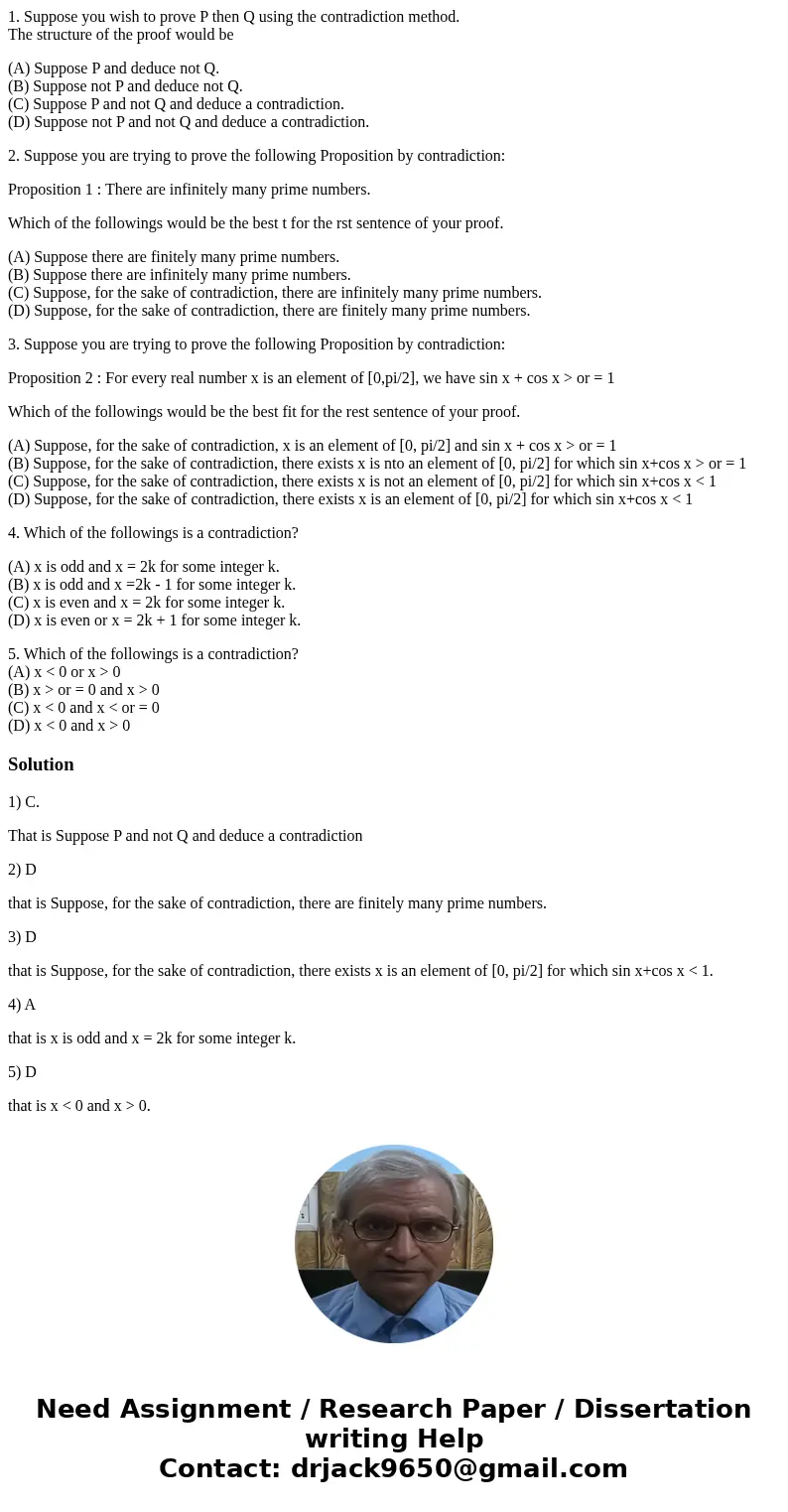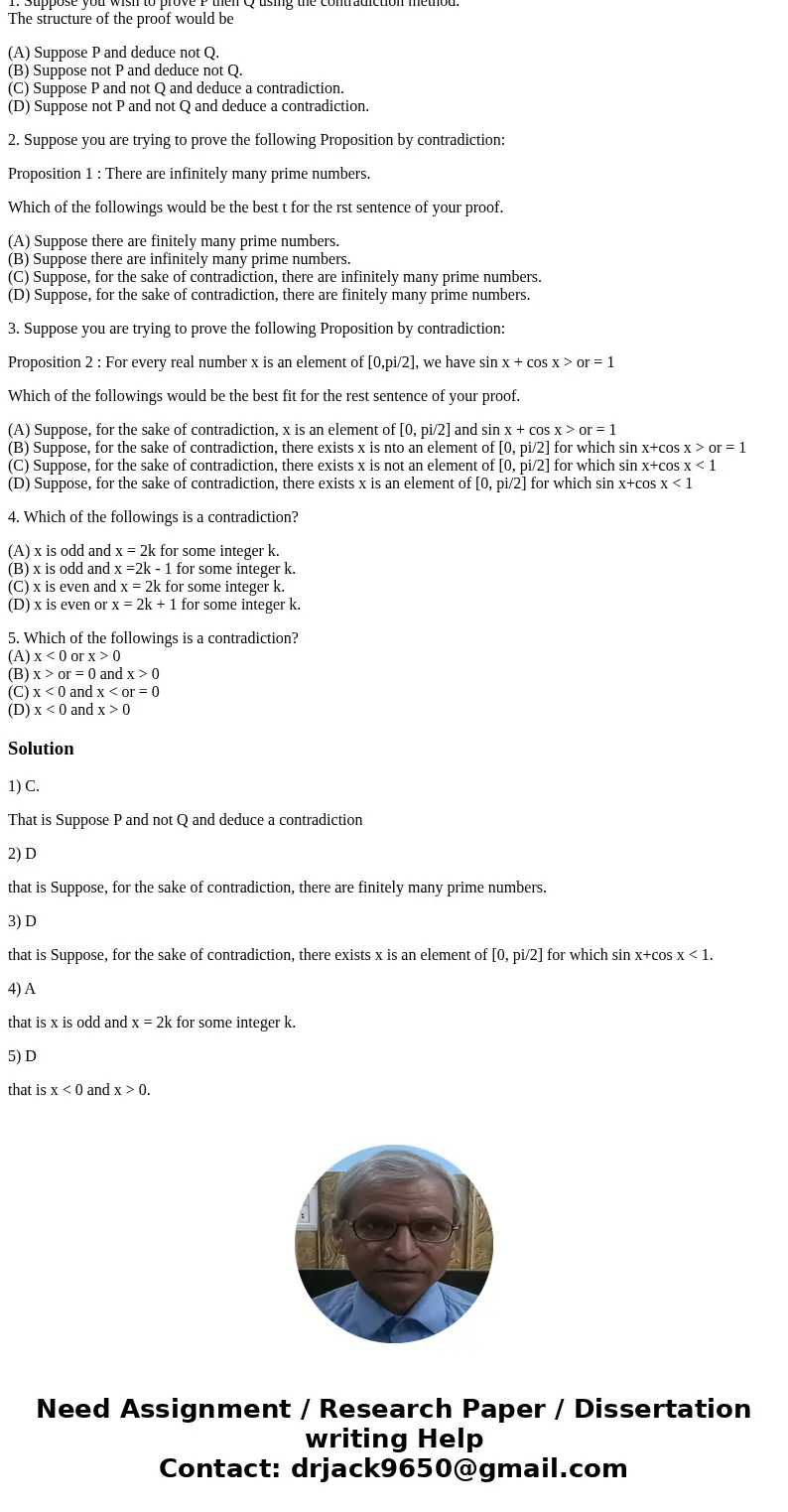1 Suppose you wish to prove P then Q using the contradiction
1. Suppose you wish to prove P then Q using the contradiction method.
The structure of the proof would be
(A) Suppose P and deduce not Q.
(B) Suppose not P and deduce not Q.
(C) Suppose P and not Q and deduce a contradiction.
(D) Suppose not P and not Q and deduce a contradiction.
2. Suppose you are trying to prove the following Proposition by contradiction:
Proposition 1 : There are infinitely many prime numbers.
Which of the followings would be the best t for the rst sentence of your proof.
(A) Suppose there are finitely many prime numbers.
(B) Suppose there are infinitely many prime numbers.
(C) Suppose, for the sake of contradiction, there are infinitely many prime numbers.
(D) Suppose, for the sake of contradiction, there are finitely many prime numbers.
3. Suppose you are trying to prove the following Proposition by contradiction:
Proposition 2 : For every real number x is an element of [0,pi/2], we have sin x + cos x > or = 1
Which of the followings would be the best fit for the rest sentence of your proof.
(A) Suppose, for the sake of contradiction, x is an element of [0, pi/2] and sin x + cos x > or = 1
(B) Suppose, for the sake of contradiction, there exists x is nto an element of [0, pi/2] for which sin x+cos x > or = 1
(C) Suppose, for the sake of contradiction, there exists x is not an element of [0, pi/2] for which sin x+cos x < 1
(D) Suppose, for the sake of contradiction, there exists x is an element of [0, pi/2] for which sin x+cos x < 1
4. Which of the followings is a contradiction?
(A) x is odd and x = 2k for some integer k.
(B) x is odd and x =2k - 1 for some integer k.
(C) x is even and x = 2k for some integer k.
(D) x is even or x = 2k + 1 for some integer k.
5. Which of the followings is a contradiction?
(A) x < 0 or x > 0
(B) x > or = 0 and x > 0
(C) x < 0 and x < or = 0
(D) x < 0 and x > 0
Solution
1) C.
That is Suppose P and not Q and deduce a contradiction
2) D
that is Suppose, for the sake of contradiction, there are finitely many prime numbers.
3) D
that is Suppose, for the sake of contradiction, there exists x is an element of [0, pi/2] for which sin x+cos x < 1.
4) A
that is x is odd and x = 2k for some integer k.
5) D
that is x < 0 and x > 0.


 Homework Sourse
Homework Sourse